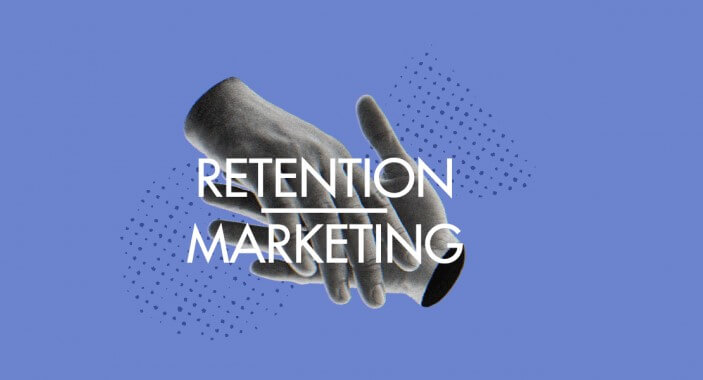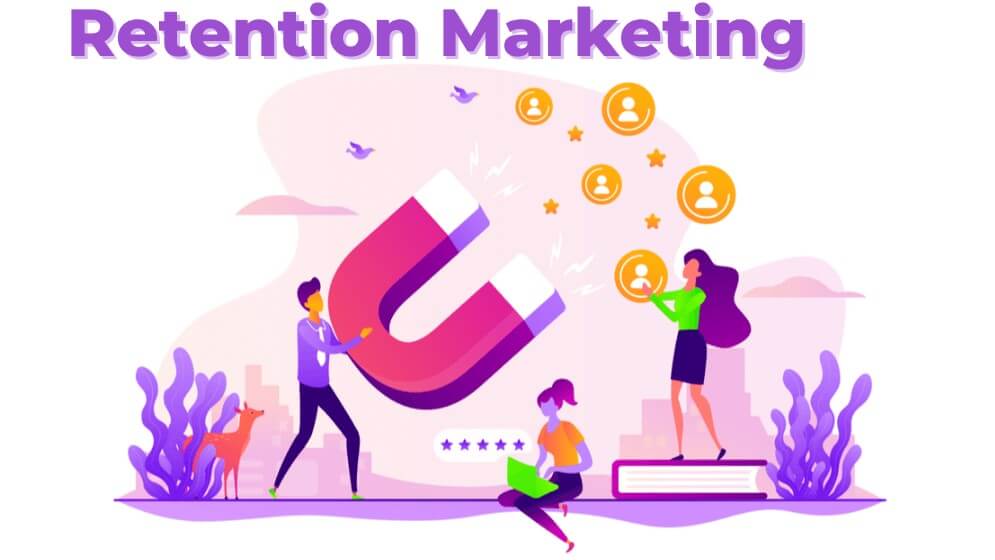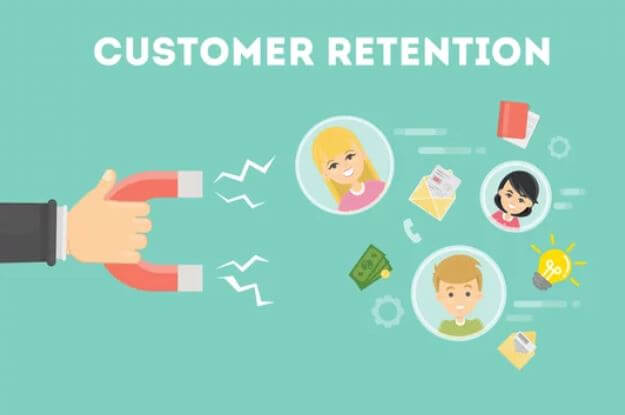Retention Marketing
Introduction:
Retention marketing is a customer-centric approach to marketing that focuses on building long-term relationships with existing customers rather than solely on acquiring new customers. Retention marketing aims to increase customer loyalty, encourage repeat purchases, and drive revenue growth.
Why Retention Marketing is essential:
Retention marketing is critical for several reasons, including:
- Increased revenue: Retaining existing customers is more cost-effective than acquiring new ones. According to a study by Bain & Company, rising customer retention rates by just 5% can increase profits by up to 95%.
- Higher customer lifetime value: Customers with a positive experience with a brand are more likely to make repeat purchases and become brand advocates, which can lead to increased customer lifetime value.
- Competitive advantage: By building solid relationships with existing customers, brands can differentiate themselves from their competitors and establish themselves as industry leaders.
Critical Strategies for Retention Marketing:
Retention marketing is a customer-centric approach to marketing that focuses on building long-term relationships with existing customers rather than solely on acquiring new customers. Retention marketing tactics aim to increase customer loyalty, encourage repeat purchases, and drive revenue growth.
To achieve this, brands must implement key retention marketing strategies. This article will discuss the most effective strategy brands can use to improve customer retention rates.
Customer Segmentation:
Segmenting customers based on their behavior, preferences, and demographics can help brands deliver more personalized marketing messages and improve the overall customer experience. By dividing their customer base into groups with similar characteristics, brands can tailor their marketing efforts to each group’s specific needs and preferences.
For example, a fashion retailer may segment customers based on their style preferences and purchase history. They can then send personalized emails to each segment promoting products most likely to appeal to them.
Personalization:
Personalization involves tailoring marketing messages and offers to individual customers based on their interests, behavior, and past interactions with the brand. Personalized marketing is more effective than generic marketing because it speaks directly to customers’ needs and desires.
Brands can use various data points to personalize their marketing efforts, such as customer behavior data, purchase history, and browsing behavior. For example, an online retailer may send personalized product recommendations to customers based on their past purchases.
Loyalty Programs:
Loyalty programs are designed to reward customers for repeat purchases and encourage them to continue doing business with the brand. These programs typically offer exclusive discounts, free products, and other perks to customers who make frequent purchases.
Loyalty programs can be structured in many ways, such as points-based systems, tiered programs, or subscription models. For example, a coffee shop may offer a free drink after a customer purchases ten drinks.
Remarketing:
Remarketing involves targeting customers who have previously interacted with the brand but did not make a purchase. By retargeting these customers with personalized marketing messages, brands can encourage them to return to the site and complete the purchase.
Remarketing can be done through various channels like email, social media, and display advertising. For example, an online retailer may send a personalized email to customers who abandoned their cart, offering discounts on the items they left behind.
Upselling and Cross-selling:
Upselling and cross-selling involve offering customers complimentary or higher-priced products they may be interested in based on their purchase history. These strategies can help increase the average order value and encourage repeat purchases.
For example, a tech retailer may offer customers who purchase a laptop a discount on a complementary product, such as a mouse or a protective case.
Customer Service and Support:
Providing excellent customer service and support can go a long way in improving customer retention rates. Brands must be responsive to customer inquiries and offer helpful solutions to any issues that may arise.
Brands can use various tools to improve customer service and support, such as chatbots, social media monitoring, and customer feedback surveys. For example, a clothing retailer may quickly use a chatbot to answer customer inquest sizing or shipping.
Key retention marketing strategies are essential for building long-term customer relationships and driving revenue growth. By segmenting customers, personalizing marketing messages, offering loyalty programs, remarketing, upselling and cross-selling, and providing excellent customer service and support, brands can improve customer retention rates and establish themselves as industry leaders.
Metrics to Measure Retention Marketing Success:
Retention marketing is a customer-centric approach to marketing that focuses on building long-term relationships with existing customers rather than solely on acquiring new customers. Retention marketing aims to increase customer loyalty, encourage repeat purchases, and drive revenue growth. To achieve this, brands must implement key retention marketing strategies. This article will discuss practical strategies brands can use to improve customer retention rates and the metrics used to measure retention marketing success.
Customer Segmentation:
Segmenting customers based on their behavior, preferences, and demographics can help brands deliver more personalized marketing messages and improve the overall customer experience. By dividing their customer base into groups with similar characteristics, brands can tailor their marketing efforts to each group’s specific needs and preferences.
Personalization:
Personalization involves tailoring marketing messages and offers to individual customers based on their interests, behavior, and past interactions with the brand. Personalized marketing is more effective than generic marketing because it speaks directly to customers’ needs and desires.
Loyalty Programs:
Loyalty programs are designed to reward customers for repeat purchases and encourage them to continue doing business with the brand. These programs typically offer exclusive discounts, free products, and other perks to customers who make frequent purchases.
Remarketing:
Remarketing involves targeting customers who have previously interacted with the brand but did not make a purchase. By retargeting these customers with personalized marketing messages, brands can encourage them to return to the site and complete the purchase.
Upselling and Cross-selling:
Upselling and cross-selling involve offering customers complimentary or higher-priced products they may be interested in based on their purchase history. These strategies can help increase the average order value and encourage repeat purchases.
Customer Service and Support:
Providing excellent customer service and support can go a long way in improving customer retention rates. Brands must be responsive to customer inquiries and offer helpful solutions to any issues that may arise.
Metrics to Measure Retention Marketing Success:
To measure the success of retention marketing efforts, brands must track several key metrics, including:
- Customer Retention Rate: This metric measures the percentage of customers who return to purchase their initial investment.
- Customer Lifetime Value (CLTV): This metric measures the total value of a customer over their entire relationship with the brand. It considers the customer’s purchase history and the likelihood of future purchases.
- Repeat Purchase Rate: This metric measures the percentage of customers who make a repeat purchase within a specified timeframe, such as a month or a year.
- Net Promoter Score (NPS): This metric measures the likelihood of customers recommending the brand to others. It is a valuable indicator of customer loyalty and brand reputation.
- Churn Rate: This metric measures the percentage of customers who stop doing business with the brand over time. A high churn rate can indicate that the brand’s retention efforts are impractical.
Retention marketing is essential for building long-term customer relationships and driving revenue growth. By segmenting customers, personalizing marketing messages, offering loyalty programs, remarketing, upselling and cross-selling, and providing excellent customer service and support, brands can improve customer retention rates. Tracking key metrics such as customer retention rate, CLTV, repeat purchase rate, NPS, and churn rate is crucial for measuring retention marketing efforts’ success and identifying improvement areas.
Best Practices for Implementing Retention Marketing:
Retention marketing is a customer-centric approach that emphasizes building long-term relationships with existing customers. By implementing retention marketing strategies, brands can improve customer loyalty, encourage repeat purchases, and drive revenue growth. However, implementing these strategies requires careful planning and execution. This article will discuss the best practices for implementing retention marketing.
Understand Your Customer’s Needs and Preferences:
The first step in implementing a successful retention marketing strategy is understanding your customer’s needs and preferences. Collecting and analyzing customer data, such as purchase history and customer feedback, can provide valuable insights into your brand’s wants and needs. Use this information to tailor your marketing efforts to your customer’s needs and preferences.
Develop Personalized Marketing Campaigns:
Personalized marketing campaigns are more effective than generic ones because they speak directly to customers’ interests and needs. Use your customer data to create targeted marketing campaigns that meet each customer’s unique needs and preferences. Personalized campaigns can include personalized emails, targeted advertising, and personalized offers.
Offer Loyalty Programs:
Loyalty programs are a proven retention marketing that rewards customers for repeat purchases and encourages them to continue doing business with your brand. When designing a loyalty program, be sure to offer valuable rewards to your customers, such as exclusive discounts, free products, or early access to new products.
Provide Excellent Customer Service and Support:
Providing excellent customer service and support is essential for retaining customers. Respond promptly to customer inquiries and complaints, and offer helpful solutions to any issues. This can help build trust and loyalty with your customers and encourage them to continue doing business with your brand.
Utilize Social Media:
Social media can be an effective tool for retention marketing. By engaging with customers on social media platforms, brands can build relationships and strengthen customer loyalty. Use social media to share valuable content, respond to customer inquiries, and offer personalized promotions.
Measure and Analyze Your Results:
Measuring and analyzing your retention marketing efforts is essential for identifying what works and what d needs improvement. Use metrics such as customer retention rate, customer lifetime value, and net promoter score to measure the effectiveness of your retention marketing strategies. Use this information to refine your approach and improve your results over time.
Implementing retention marketing requires a customer-centric approach and a focus on building long-term relationships with existing customers. To successfully implement retention marketing, brands must understand their customers’ needs and preferences, develop personalized marketing campaigns, offer loyalty programs, provide excellent customer service and support, utilize social media, and measure and analyze their results. By following these best practices, brands can improve customer loyalty, encourage repeat purchases, and drive revenue growth.
Common Challenges in Retention Marketing:
Retention marketing is essential for businesses to retain customers, increase loyalty, and drive revenue growth. However, implementing retention marketing can come with several challenges. In this article, we will discuss some common difficulties in retention marketing and how to overcome them.
Lack of Customer Data:
One of the significant challenges in retention marketing is the lack of customer data. Collecting and analyzing customer data is essential to understanding your customer’s needs and preferences and tailoring your marketing efforts to them. However, many businesses struggle to collect and analyze customer data effectively.
To overcome this challenge, businesses can invest in customer relationship management (CRM) systems to track customer interactions and gather valuable customer data. Additionally, companies can conduct surveys and collect customer feedback to gain insight into their needs and preferences.
Ineffective Communication:
Effective communication is crucial for retaining customers. However, ineffective communication can lead to misunderstandings and frustration, leading to customer churn.
Businesses should focus on clear and concise customer communication to overcome this challenge. Use personalized communication strategies, such as targeted emails, to ensure that customers receive relevant information. Additionally, businesses should respond promptly to customer inquiries and complaints to show that they value their customers’ opinions and feedback.
Inconsistent Brand Experience:
A consistent brand experience is essential for building customer loyalty. However, inconsistent experiences across channels and touchpoints can confuse and erode customer trust.
To overcome this challenge, businesses should maintain a consistent brand experience across all channels and touchpoints. Use consistent branding, messaging, and customer service practices to create a unified customer experience.
Lack of Resources:
Retention marketing can be time-consuming and require significant resources. However, many businesses may not have the resources necessary to implement comprehensive retention marketing.
To overcome this challenge, businesses can prioritize retention marketing efforts that offer the highest return on investment. For example, investing in customer service and support can help retain customers and drive revenue growth without requiring significant resources.
Difficulty in Measuring ROI:
Measuring retention marketing efforts’ return on investment (ROI) can be challenging. However, without measuring ROI, businesses may be unable to justify investing in retention marketing efforts.
To overcome this challenge, businesses should establish clear goals and metrics for retention marketing efforts. Use metrics such as customer retention rate, customer lifetime value, and net promoter score to measure the effectiveness of retention marketing strategies. Use this information to refine your approach and improve your results over time.
Implementing retention marketing can come with several challenges. To overcome these challenges, businesses must collect and analyze customer data, focus on effective communication, maintain a consistent brand experience, prioritize retention marketing efforts that offer the highest return on investment, and establish clear goals and metrics for retention marketing efforts. Businesses can successfully implement retention marketing and drive revenue growth by addressing these challenges.
Conclusion:
Retention marketing is a critical business strategy to retain customers, increase loyalty, and drive revenue growth. In this article, we discussed several essential plans for retention marketing, metrics to measure retention marketing success, best practices for implementing retention marketing, and common challenges in retention marketing.
Some of the key strategies for retention marketing include focusing on customer service and support, creating personalized experiences, offering incentives and rewards, and leveraging data to understand customer behavior and preferences. Additionally, businesses should measure their success by tracking customer retention rate, lifetime value, and net promoter score.
Best practices for implementing retention marketing include creating a customer-centric culture, investing in the right technology and tools, and regularly communicating with customers to build trust and loyalty. However, businesses may face several challenges when implementing retention marketing, such as customer data, ineffective communication, inconsistent brand experiences, a lack of resources, and difficulty measuring ROI.
To overcome these challenges, businesses must prioritize customer data collection and analysis, focus on effective communication, maintain a consistent brand experience, prioritize retention marketing efforts with the highest ROI, and establish clear goals and metrics for retention marketing efforts.
ImplementiAsive retention marketing requires a long-term commitment to customer satisfaction and loyalty. By retaining customers and building long-term relationships, businesses can increase revenue growth, improve customer loyalty, and differentiate themselves in a crowded market.
F.A.Q
Why is retention necessary in marketing?
Retention is essential in marketing because retaining existing customers is much more cost-effective than acquiring new ones. Not only is it more expensive to reach new customers, but existing customers also tend to spend more money over time and refer new customers to the business.
Retaining customers also helps build brand loyalty and trust. Satisfied customers are more likely to become repeat customers and recommend the business to others. This positive word-of-mouth can lead to a steady stream of new customers and help the company stand out in a crowded market.
Furthermore, customer retention is essential for long-term business growth. Retaining customers over time can lead to a higher customer lifetime value, the total revenue a customer generates over their relationship with the business. By focusing on retention marketing, companies can increase customer lifetime value and drive revenue growth.
Retention is essential in marketing because it is cost-effective, builds brand loyalty and trust, and drives long-term business growth.
What are retention marketing channels?
Retention marketing channels are communication channels and strategies businesses can use to keep existing customers engaged, interested, and loyal to the brand. Some common retention marketing channels include:
- Email marketing: Email is a powerful retention marketing channel that can send customers personalized messages, promotions, and other relevant content.
- Social media: Social media platforms like Facebook, Twitter, and Instagram can be used to engage with customers, share updates, and provide customer service.
- Loyalty programs incentivize customers to continue business with a brand by offering rewards, discounts, and exclusive perks.
- Referral programs: Referral programs encourage existing customers to refer new customers to the brand in exchange for rewards or incentives.
- Customer service: Providing exceptional customer service and support can help build customer trust and loyalty.
- In-app messaging: In-app messaging can provide customers personalized recommendations, promotions, and other relevant content within a mobile app or website.
- Push notifications: Push notifications can send timely, relevant messages and promotions to customers directly on their mobile devices.
By leveraging these retention marketing channels, businesses can keep their customers engaged, interested, and loyal to the brand over time.
What are the types of retention in digital marketing?
There are several types of retention in digital marketing, including:
- Customer retention: This refers to the ability of a business to retain existing customers over time by providing exceptional customer service, personalized experiences, and relevant content.
- Revenue retention: This refers to the ability of a business to retain existing revenue streams over time by providing customers with relevant products, services, and promotions.
- Brand retention refers to a business’s ability to retain customers’ trust and loyalty over time by maintaining a consistent brand identity, messaging, and experience.
- Content retention refers to a business’s ability to retain customers’ attention and engagement over time by providing high-quality, relevant, and engaging content.
- Engagement retention refers to a business’s ability to retain customers’ engagement and interest over time by providing personalized experiences, incentives, and rewards.
Businesses can improve customer satisfaction, loyalty, and revenue growth over time by focusing on these types of retention in digital marketing.






